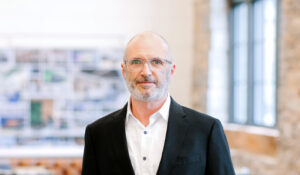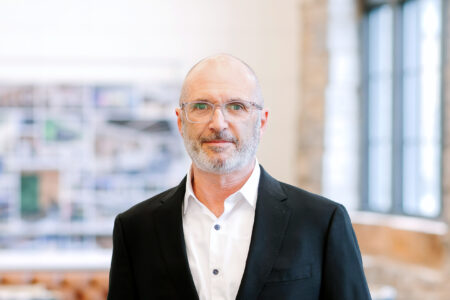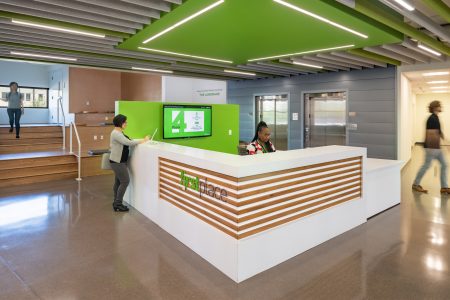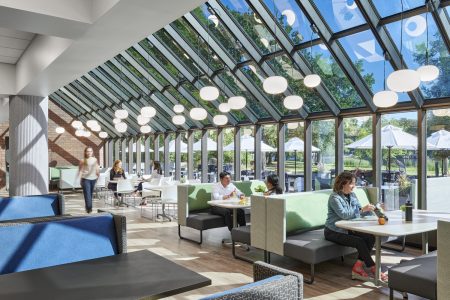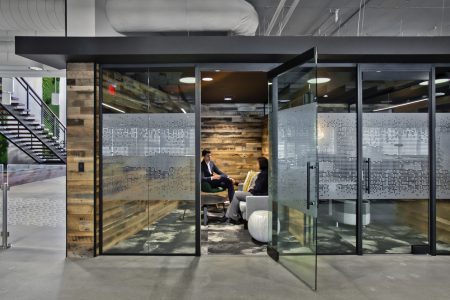Neurodiversity, Inclusion and the Metaverse

RSP Principal Derek McCallum AIA, LEED AP explains how the metaverse has great potential to support neurodiversity and accelerate inclusion initiatives in the workplace.
*This article was originally published in Work Design Magazine.
Innovation in virtual and augmented reality platforms and the vast opportunities connected to the metaverse are driving innovation in nearly every industry. In the workplace, future-focused companies are increasingly exploring ways to use this nascent technology to offer workers more choices and better support for neurodiverse employees.
It would be nearly impossible to list all the challenges and opportunities associated with this technology in a single article, so I’ll keep things focused on an area that is top-of-mind right now as many of us start to make our way back into the office—the workplace. The truth is, while we can use our expertise and experience to anticipate outcomes, no one truly knows what the metaverse will become and what the wide-ranging effects will be. At the moment, the possibilities are exciting and bring to mind more questions than answers. As a principal and hands-on designer in a large, diverse practice, my hope is that we will be able to collectively harness the inherent opportunities of the metaverse to support richer, more accessible human experiences across all aspects of the built environment, and that includes the workplace.
Design Thinking for a New Era
Designers have always had to live with one foot in the present, one in the future, and possess a healthy respect for the anthropology of the past. We must constantly think about what today’s changes will mean for how people live and operate in the future, putting the human experience at the center of everything we do.
As we learn more about neurodiversity and the reality that up to 40% of adults are considered neurodiverse, it becomes irresponsible and frankly, shortsighted to not address different needs in the workplace and create a more equitable environment, especially when we have the tools to do so.
These differences have always existed, but the pandemic accelerated their visibility in many ways. For the first time, many knowledge workers could work exclusively from home, customizing and personalizing their environments according to how they work best. This was a boon to creativity and productivity for people who find social environments challenging or tiring. Whereas for others, the lack of in-person engagement and interaction created new struggles.
A virtual, truly immersive space presents an opportunity to bring both worlds together. A place where colleagues, clients, and connections can have a shared experience while giving everyone, neurotypical or not, countless ways to customize their environments to make them comfortable and productive.
As we venture into new ways of thinking and designing, we need to be cognizant of the possible security and HR concerns that may arise when implementing these new technologies in the workplace. As is often the case with something new and evolving, the lack of precedence means that governance is lagging behind. There is so much to consider and to navigate in this uncharted territory, yet there is no denying that the metaverse has the potential to impact the workplace for the better by maximizing opportunities for immersive communication, team building and engagement.
Working in the Metaverse
From an architectural and design perspective, the metaverse offers us the ability to design a virtual space that follows the laws of physics, right down to the particle level. These spaces can use real-time streaming data to inform the process and use simulation, machine learning and reasoning to help make essential adjustments and improvements.
On a practical level, this would allow companies to offer hybrid workers many more choices. In a workplace in the metaverse, someone who has a challenge with bright lights, colors or loud sounds could easily adjust those environmental components. People who struggle with focus or concentration can dial up or dial down atmospheric distractions depending on their needs. Those with physical differences that make frequent travel difficult can have a shared, immersive experience with their colleagues, without being the only person on a two-dimensional video call. Global colleagues who don’t share the same language can have their conversations translated in real-time, making collaboration that much richer and more accessible. With these examples in mind, it’s clear that the metaverse can be a powerful tool to include more people and perspectives than ever before.
The Intersection of Technology and Inclusion
Virtual or physical, the foundational principles of design are the same. When designing a modern workplace in the physical world, we already consider neurodiversity and inclusion through activity-based work and choice. By offering a variety of spaces for collaboration, socializing, respite, and heads-down, focused work, companies empower employees to make choices that allow them to be their most creative and productive. That level of choice will be even more customizable in the metaverse environment.
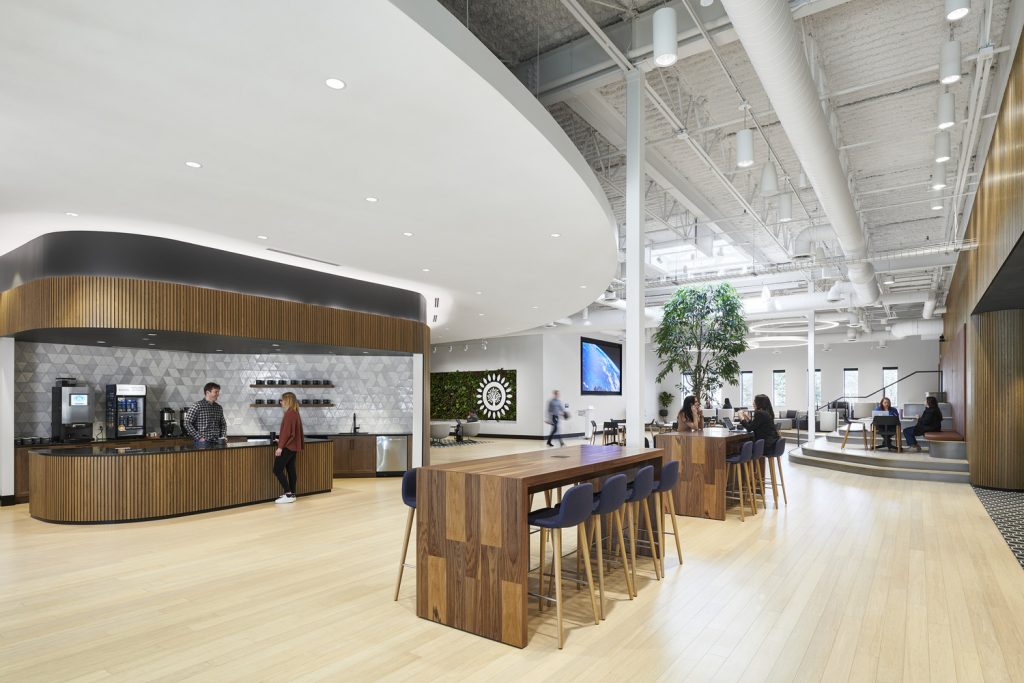
Of course, this technology is still in its early stages of adoption. Architects have been using 3-D modeling and simulation as design tools for many years, but we are just starting to experiment with their ability to enrich the human experience in our day-to-day. How do we incorporate “in-between” spaces—the places that, in real life, offer the chance for casual conversations? The rich, analog parts of our day, like water cooler chat, that we don’t want to lose. The serendipitous parts of our day that get us away from the work-from-home tyranny of back-to-back video meetings. And we will have to answer to the deep-rooted human need for touch and one-on-one experiences. As the technology improves, it only stands to reason that the physical and virtual will become more seamless.
Good for People, Good for Business
As designers we are in a unique position. We are knowledge workers who have, in a compressed few years, accelerated the skills of working remotely. We are also people with a deeply ingrained passion for our built environment as well as excitement for futuristic ideas and modes of engaging.
That unique position and our big picture perspective indicates that there is a compelling business case for incorporating the metaverse into the hybrid workplace, and vice versa. Immersive technology could save a fortune on business travel without sacrificing the quality of collaboration on a team. Younger generations, those who have grown up with hyper-detailed gaming environments and multi-player platforms, are already familiar with the metaverse and will become increasingly comfortable experiencing the world through it, making it an important recruitment and retention tool for the best talent. And an optional workplace in the metaverse can help neurodiverse, neurotypical and differently abled employees meet their own needs so they can bring their best, most fulfilled selves to work.
What is not going away is that our business and design decisions will continue to be about investing in people. Investing in the human experience. And investing in the idea that the more we embrace diversity and inclusion, the more perspectives we will have and the better off we will be.

